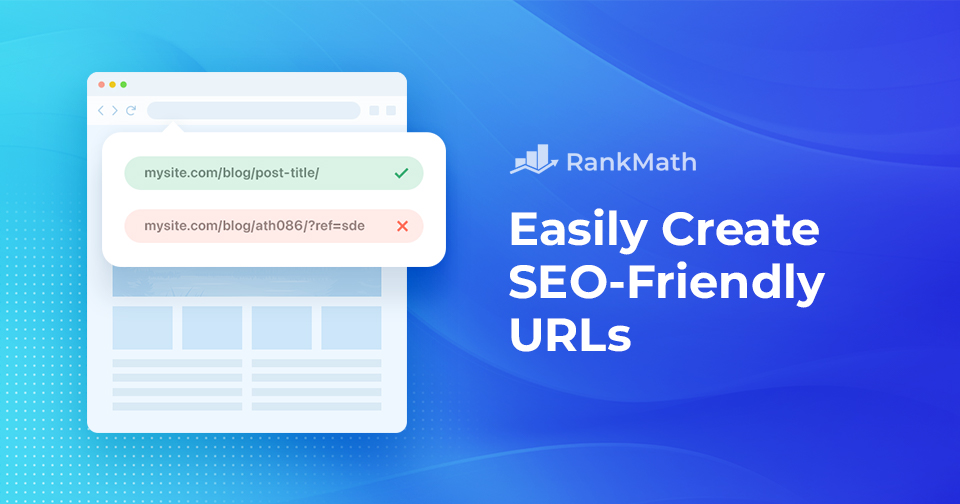Creating SEO-friendly URLs might seem like a small detail, but it plays a big role in how both users and search engines understand your content.
A well-structured URL not only improves your site’s visibility in search results but also enhances user experience by making your links easy to read, remember, and share.
On the other hand, messy or confusing URLs can hurt your SEO and confuse your audience.
In this post, we’ll discuss everything about SEO-friendly URLs and help you create them. So, without any further ado, let’s get started.

Table Of Contents
1 What Are SEO-Friendly URLs?
SEO-friendly URLs contribute significantly to a positive user experience, making it simpler for both search engines and users to navigate the web and discover valuable content.
For instance, instead of a generic URL like yourwebsite.com/page?id=123, an SEO-friendly alternative would be yourwebsite.com/seo-friendly-urls, clearly indicate the page’s content.
Here’s an example of an SEO-friendly URL from our blog.

2 Importance of SEO-Friendly URL Structures
Let’s say you’re targeting the keyword best vegan recipes. Note the URLs of the top 10 results that appear. Here’s an example of the URLs that we found.
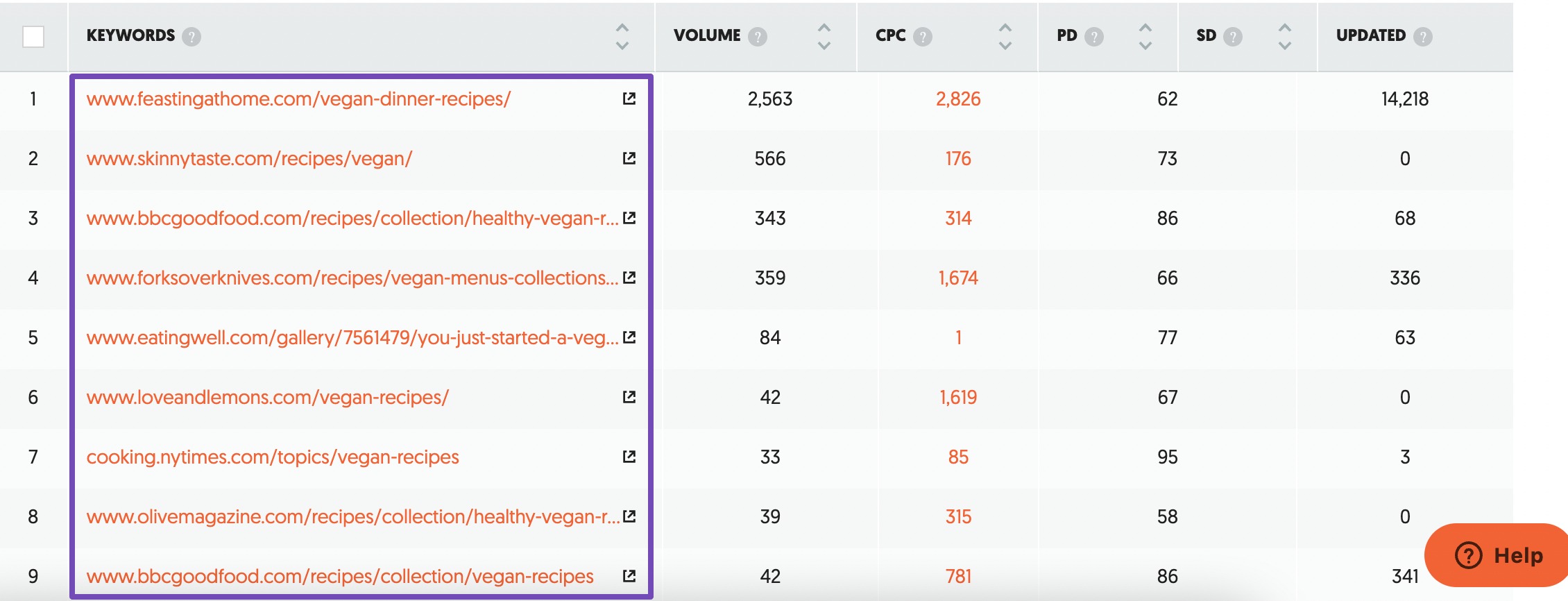
Let us now discuss the key reasons why SEO-friendly URLs are essential:
Enhanced User Experience
SEO-friendly URLs provide an amazing user experience by providing clear and easily understandable web addresses.
Consider the URL olivemagazine.com/recipes/collection/healthy-vegan-recipes. This URL structure provides the audience with clear navigation, indicating they are accessing a category specifically dedicated to vegan recipes on the Olive Magazine website.
Audiences searching for vegan recipes can easily identify and access relevant content, enhancing user experience.
Improved Click-Through Rates
Optimized URLs often include relevant keywords, such as skinnytastes.com/recipes/vegan.
They are more likely to attract clicks from users interested in vegan recipes. When users see URLs that match their search intent in search results, they are more inclined to click on them, leading to improved click-through rates.
As a result, websites with well-optimized URLs can experience higher CTR, driving more organic traffic to their pages.
Efficient Indexing by Search Engines
Well-structured URLs make it easier for search engine crawlers to analyze and index a website’s pages.
For instance, when search engine bots encounter URLs such as bbcgoodfood.com.com/recipes/collection/healthy-vegan-recipies they can quickly determine the page’s topic (vegan recipes) and index it appropriately.
This ensures that the content is more likely to appear in relevant search queries, enhancing its visibility and discoverability.
Increased Backlink Opportunities
Clear and user-friendly URLs are more likely to attract backlinks from other websites.
For example, if a nutrition blog references a collection of vegan recipes from a reputable site like the New York Times, it will likely include a hyperlink to the corresponding URL.
These backlinks drive referral traffic and signal to search engines that the linked page is valuable and authoritative, potentially boosting its search ranking.
3 Best Practices for SEO-Friendly URLs
Now that you have an idea of SEO-friendly URLs, we’ll discuss the best practices to create them.
3.1 Maintain Consistency in URLs
Consistency in your URLs means using a predictable and uniform format across your website. This not only helps users understand where they are on your site, but also makes navigation easier by creating a clear content hierarchy.
When audiences come across a consistent URL pattern, they can predict the structure of other URLs within the site, making navigation easier.
From a search engine perspective, a consistent URL structure simplifies the indexing process, allowing search engine crawlers to understand and categorize the website’s content efficiently.
For instance, consider a website about digital marketing with inconsistent URL structures:
yoursite.com/marketing-tips/seo-tips, yoursite.com/blog-page/123
Now, compare it to a website with a consistent URL structure:
yoursite.com/marketing-tips/seo-tips, yoursite.com/marketing-tips/content-strategy
In the above consistent URL example, audiences can easily predict that the next URL under marketing-tips will likely relate to another aspect of marketing.
3.2 Create Descriptive and Meaningful URLs
A descriptive URL gives users and search engines a clear idea of what to expect from a webpage—without even clicking on it.
Instead of using vague or generic paths like yoursite.com/page123, opt for meaningful structures such as yoursite.com/content-creation-tips. This not only improves clarity for visitors but also provides valuable context for search engines.
Search engines favor descriptive URLs because they offer insight into the page’s topic, making it easier to index and match with relevant search queries. At the same time, users are more likely to trust and click on a link that clearly indicates what the page is about.
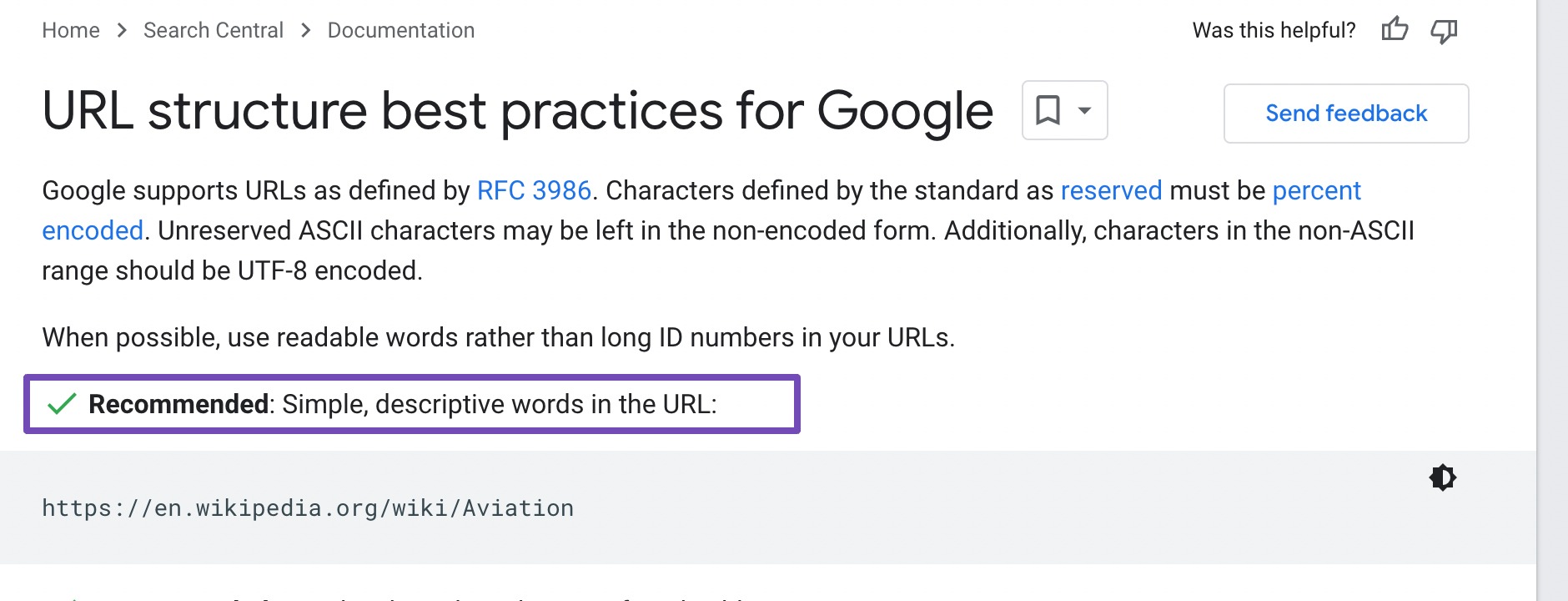
3.3 Include Keywords
Adding relevant keywords to your URLs helps both users and search engines understand the content of the page. It makes your URLs more meaningful and improves the chances of your page appearing in relevant search results.
When your audience encounters a URL that includes relevant keywords, it clearly indicates the content they can expect on the page, thereby enhancing their overall browsing experience.
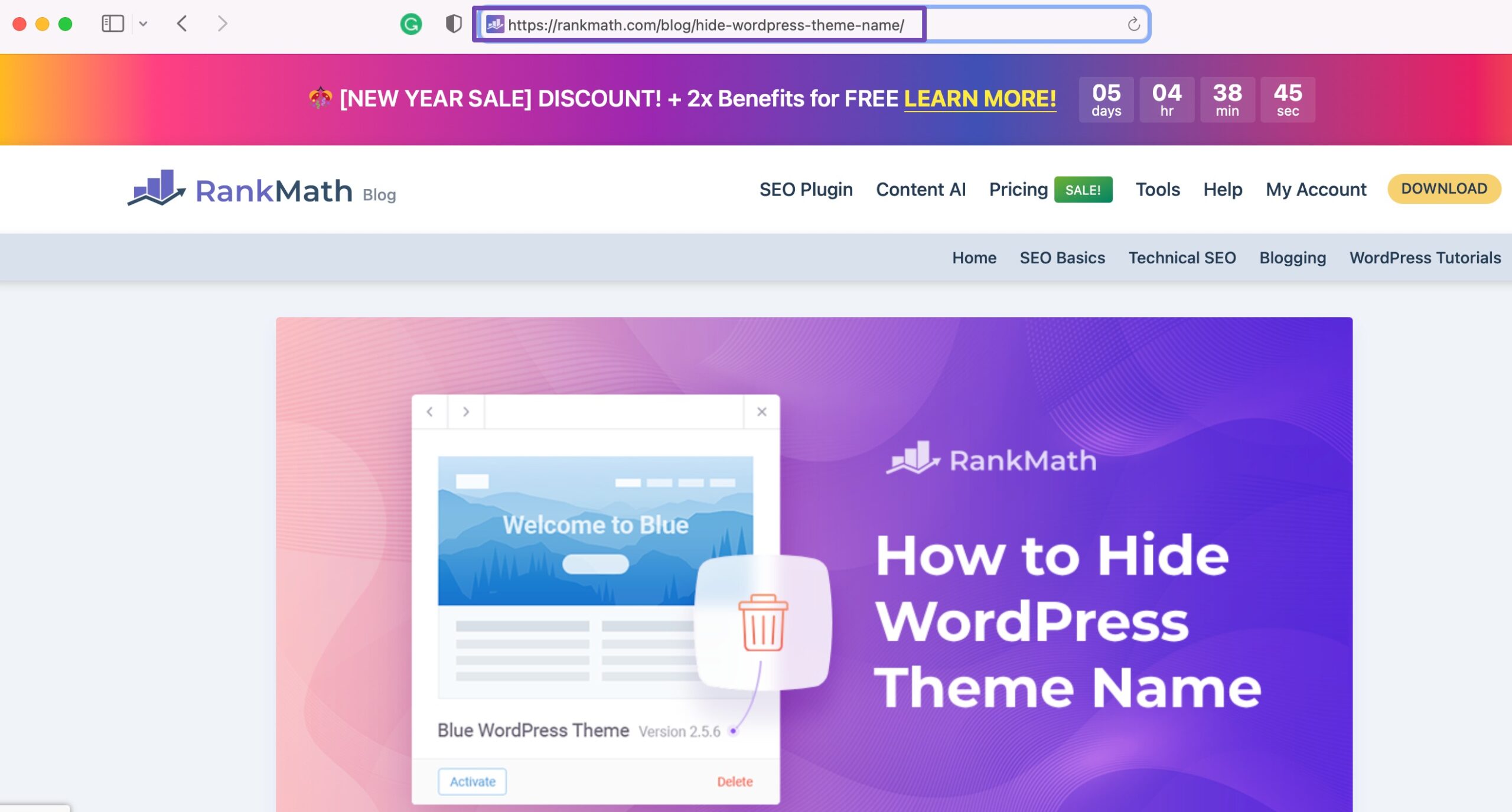
If you’re using Rank Math, it checks whether your URL includes the primary focus keyword. If not, you’ll see a suggestion. Thanks to Content AI, you can easily fix it—just click the Fix with AI button, and it will update the URL to include your focus keyword.

Refer to our dedicated tutorial on keyword research to find the right keywords for your website.
3.4 Use Hyphens in URLs
When it comes to creating SEO-friendly URLs, using hyphens to separate words is the preferred approach for both readability and search engine clarity.
Hyphens act as visual separators, making URLs easier to read and understand.

Consider the following URLs for a vegan recipe website:
- With Hyphens:
www.example-vegan-recipes.com/best-vegan-dinner-ideas - With Underscores:
www.example_vegan_recipes.com/best_vegan_dinner_ideas
In the above example, the URL with hyphens is not only easier for users to read but also aligns with Google’s best practices. Search engines treat hyphens as word separators, recognizing each word individually, which helps in keyword detection and improves overall SEO.
On the other hand, underscores are not treated the same way by search engines and may cause the words to be read as a single long string, thereby reducing clarity.
Additionally, search engines interpret hyphens as separators, treating each word between them as a distinct entity. This helps in identifying and recognizing keywords within the URL.
Search engines tend to favor URLs that are clear, descriptive, and easily understandable, and hyphens contribute to achieving this clarity and readability.
In 2007, Matt Cutts advised that for new websites, it’s preferable to use hyphens in URLs. However, he emphasized that there’s no need to alter the URLs of existing or older sites.

3.5 Use Lowercase Letters in URLs
Using lowercase letters in URLs is essential for consistency and avoids potential issues related to case sensitivity.
Search engines treat uppercase and lowercase letters differently, and using consistent lowercase letters ensures uniformity in URLs across a website.

For instance, yourwebsite.com/Page and yourwebsite.com/page may be considered different URLs by search engines. To be on the safer side, it’s a good practice to use lowercase URLs.
3.6 Do Not Use Numbers in URLs
Using numbers in URLs can make them look cluttered, harder to remember, and potentially misleading, especially as your content updates over time.
For example, take a blog post titled “10 Best SEO Practices.” A URL like:
rankmath.com/blog/top-10-best-seo-practices may work initially, but what happens when you update the post to include more tips?
You’d have to change the URL (which can hurt SEO) or leave it inaccurate.
Instead, a cleaner, future-proof option will be: rankmath.com/blog/best-seo-practices

This version is easier to read, more descriptive, and doesn’t lock you into a specific number, even if you later update the content.
Search engines and users both prefer simple, meaningful URLs that clearly reflect the page topic. Avoiding numbers is a smart way to ensure long-term clarity and flexibility.
3.7 Remove Special Characters
Special characters, such as spaces, commas, semicolons, question marks, percent signs, etc., can lead to complications in URL interpretation and may not be uniformly supported across various web platforms.
By excluding special characters, URLs become cleaner, more readable, and less prone to encoding issues.
3.8 Use HTTPS
HTTPS (Hypertext Transfer Protocol Secure) is the secure version of HTTP. It encrypts data exchanged between your website and visitors, protecting sensitive information like login credentials and payment details.
But beyond security, HTTPS is also a confirmed ranking factor in Google’s algorithm. Websites that use HTTPS are seen as more trustworthy, which can lead to higher search rankings and better user engagement.

Modern browsers also flag non-HTTPS sites as Not Secure, which can turn visitors away and damage your site’s credibility.
If you’re still running your site on HTTP, it’s time to make the switch. Installing an SSL certificate is a simple but powerful step toward better SEO and a safer user experience.
HTTPS enhances the trustworthiness of a website, positively impacting its search engine rankings and overall online reputation. So, if you’re still not using HTTPS, it’s worth a try!
3.9 Use Subdomains Only if Needed
Subdomains are prefixes to the main domain and can be useful for creating separate sections or functionalities. They’re typically used to separate different areas of a website according to their functionality.
According to Google, subdomains are treated no differently than any other content, and ranking a subdomain is no more difficult than ranking a subfolder.
Subdomains should be used only when there is a clear need for functional or organizational separation within a website. Using them unnecessarily can complicate site architecture and might affect your SEO efforts.
Refer to our dedicated tutorial on subdomains vs. subfolders to learn more about them.
3.10 Use Subfolders for Hierarchy
Using subfolders in URLs is a strategic approach to establishing a hierarchical structure within a website.
For example, consider a website that covers various topics and utilizes subfolders for categorization:
- Without Subfolders: yoursite.com/topic
- With Subfolders: yoursite.com/category/topic
In the second example, the use of subfolders introduces a categorical layer, providing a more structured and intuitive organization. This hierarchy helps the audience navigate through different website sections easily.
4 Optimizing URLs With Rank Math
You must regularly review and update URLs across the site to ensure they remain optimized for search engines.
With Rank Math, you can efficiently review and update URLs in bulk using the CSV method.
Rank Math’s CSV export feature allows you to export a list of all URLs on your website. This list will include essential information about each URL, such as its current structure, page title, meta description, etc.
To do so, navigate to Rank Math SEO → Status & Tools → Import & Export inside your WordPress admin area. Under the CSV File section, navigate to the Export CSV tab, as shown below.
To edit the SEO Title, Description, and other metadata related to posts, you only need the Posts metadata. So select Posts and click the Export button.
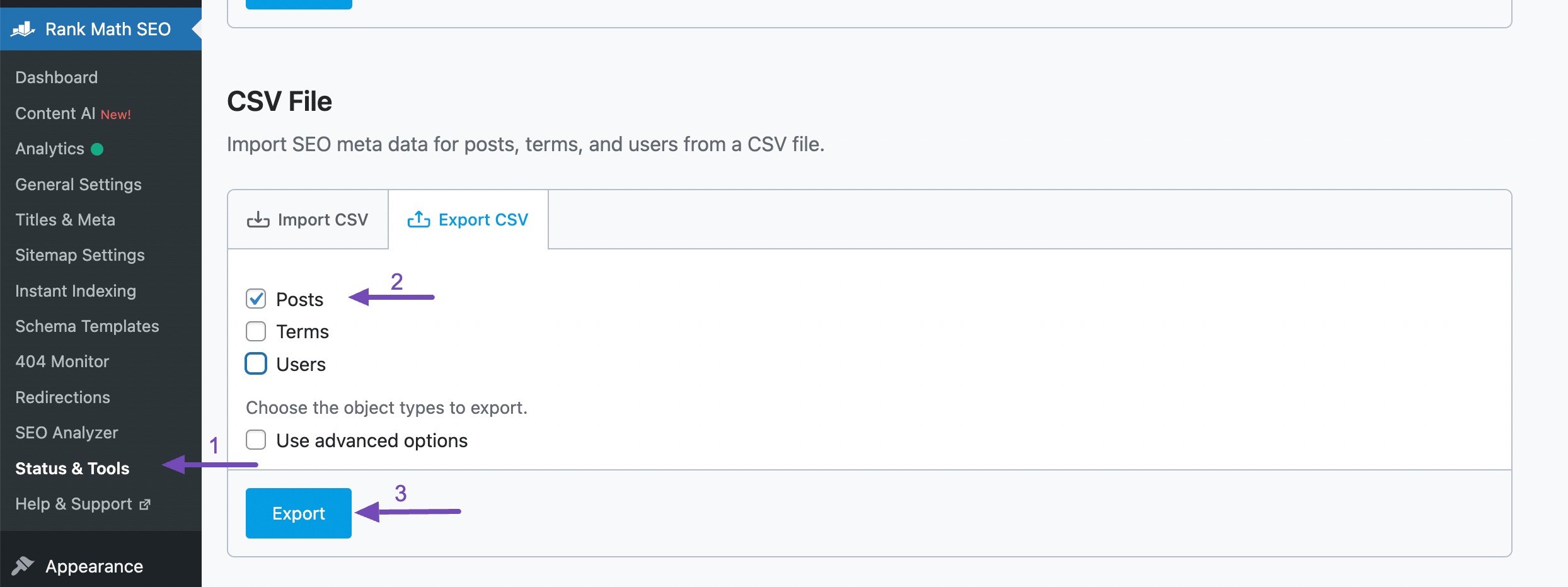
The CSV file will be downloaded to your computer. You can then review it to identify URLs that need optimization, such as those containing underscores instead of hyphens or URLs that are overly long or unclear.

Once you have identified URLs that need updating, make the necessary changes directly within the CSV file. For example, let’s replace technical-seo-guide-till-3-5 to technical-seo-guide.

After making these changes, save the CSV file.
With the updated CSV file ready, you can import it back into Rank Math to apply the changes to the website.
After updating URLs, you can verify the changes by reviewing your website’s structure and conducting tests to ensure proper redirection if any URLs have been modified.
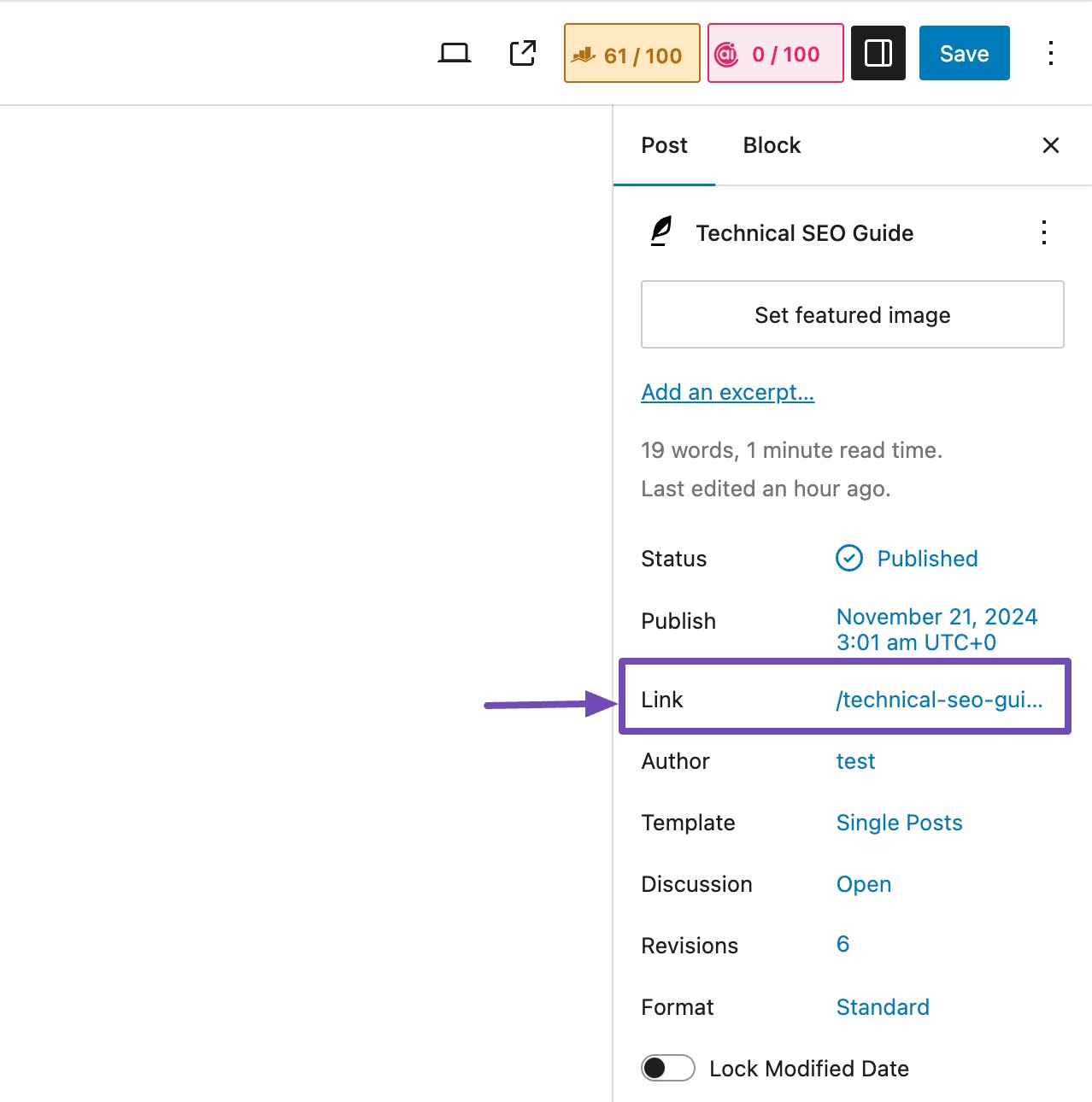
5 Conclusion
URL optimization is not a one-time task; it’s an ongoing process for maintaining a strong online presence. As search engine algorithms evolve and audience behaviors change, regularly revisiting and optimizing URLs becomes a necessity.
While investing excessive time in creating SEO-friendly URLs may not yield significant returns, adopting a logical approach and adhering to the best practices makes complete sense.
Several key practices stand out to create SEO-friendly URLs. Begin by conducting thorough keyword research and strategically integrating these keywords into the URL structure. Utilize hyphens to enhance readability and separate words, and consider the removal of numbers and special characters for cleaner, more user-friendly URLs.
So, take the first step towards higher rankings and improved user experience and create SEO-friendly URLs.
If you like this post, let us know by Tweeting @rankmathseo.
